Asheville East End church saved from demolition, finds 2nd life as affordable housing
ASHEVILLE - The Cappadocia Fire Baptized Holiness Church of God of the Americas — Cappadocia for short — sat at 57 Max St. in the historically Black East End neighborhood for over a century. The church has been a monolith on Catholic Hill, serving generations of family, clergy and community.
After being sold just a few years ago, the church was nearly set for demolition. Now, it's seeking new life.
The Preservation Society of Asheville and Buncombe, in collaboration with the East End/Valley Street Neighborhood Association and Dogwood Health Trust, is working to preserve the historic Black church by converting it into three apartments. The project at Cappadocia also follows efforts to restore a historic home in the neighborhood. If everything goes as planned, both buildings will see preservation and conversion into affordable housing.
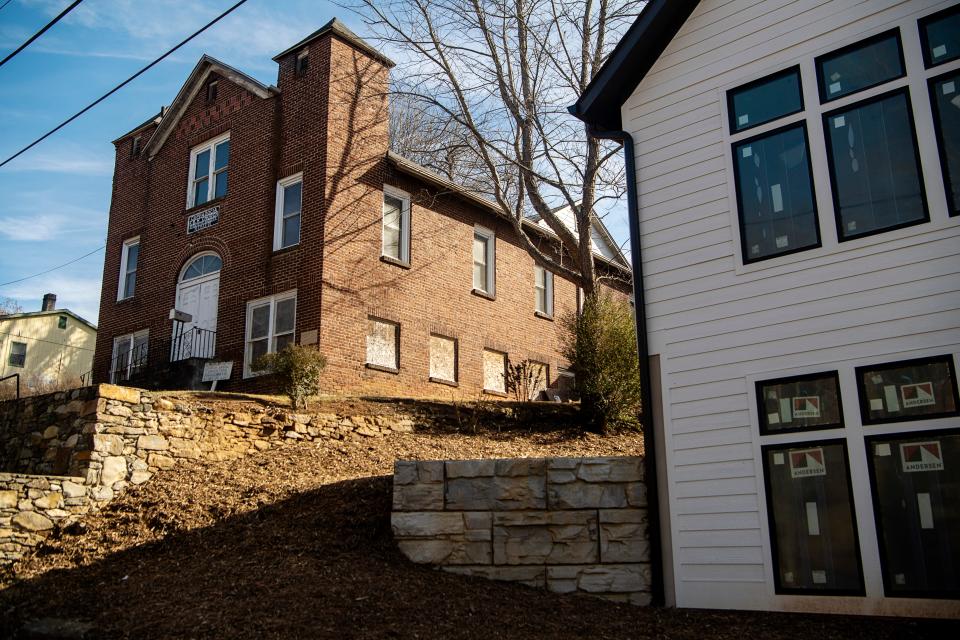
The effort comes after Cappadocia was sold in 2021 by the South Carolina-based Fire Baptized Holiness Christian denomination to an Asheville-based developer for $200,000. The plan was to demolish the nearly 100-year-old building and create single-family housing in its place.
Executive Director of the preservation society, Jessie Landl, noted the effort to save Cappadocia started with a short note in August 2021.
Will Hornaday, a graphic designer who does volunteer work for the preservation society, had been reading property transfers in the Citizen Times, Landl said. He saw Cappadocia had sold and informed the organization.
"We can't know all the things that are going on in neighborhoods. This was just a fluke where somebody close to our organization read those property transfers and saw that Cappadocia had sold," Landl said.
Another property close to Cappadocia had raised alarms for the PSABC.
The same developer had bought a 1910 home just a few steps down from the church at 32 Grail St. The home is one of the few remaining after urban renewal efforts in the 1970s displaced and destroyed the homes of East End's Black families, Landl said.
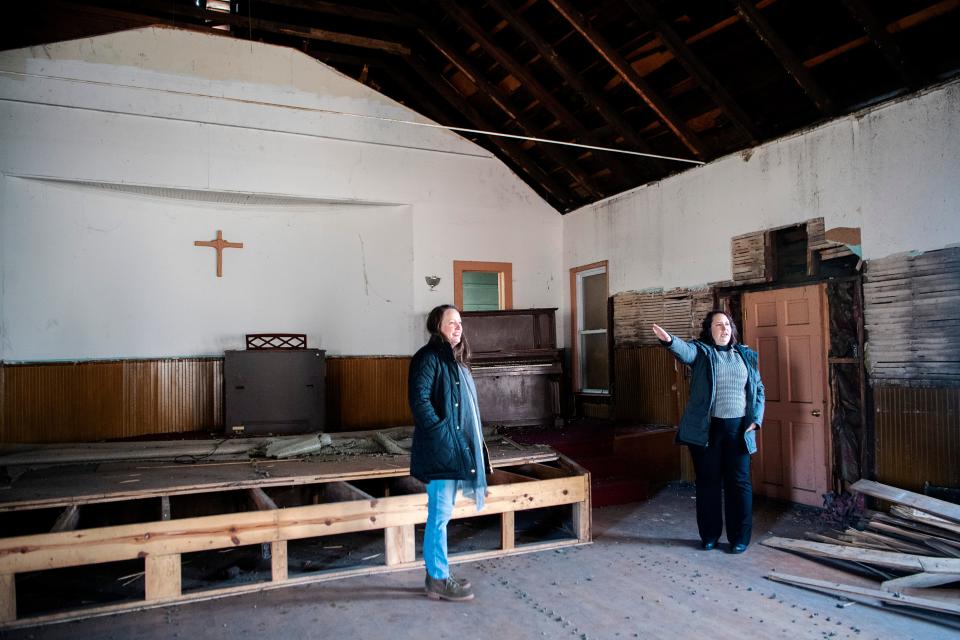
After the sales, the PSABC and East End/Valley Street Neighborhood Association decided to act.
"It wasn't until the church was thrown into the mix that it was like: 'Okay, we've got to figure out a way to do it. To make it work,'" Landl said. "Because the loss of Cappadocia was sort-of too much for everyone to stomach."
Within a few weeks of the sale, the PSABC and East End/Valley Street neighborhood association approached the developer with their concerns. In January 2022, the PSABC officially bought Cappadocia and the Grail Street home from the developer, who retained an open lot to build a new single-family home.
"I do, in this case, like to give the developer a lot of credit," Landl said. "When there was an outcry from the neighborhood and from us, they heard us and worked with us to find a solution to give us the best of both worlds."
Church caretaker and East End residents not told of sale
Walking up the stairs to the church, names of trustees from the mid-30's are etched in pillars of concrete. A cornerstone on the church states: "Cappadocia Fire Baptized Holiness Church of God. Built 1908. Rebuilt 1926."
Inside the church, an old pew, piano and cross serve as a reminder of those who spent so many years in the space.
Life-long East End resident Jesse Pulley has spent practically his entire life in and out of the Cappadocia, first entering the church when he was just a "itty-bitty-boy."
"Now, I'm 73 years old and I was going to that church when I was just 6 or 7," Pulley told the Citizen Times.
After his service in Vietnam, Pulley returned to Cappadocia in the late 70's and would later serve as chairman trustee for the church. Church service largely ended in 2008, though informal service continued until most church members had moved on or "started going to nursing homes," Pulley said.
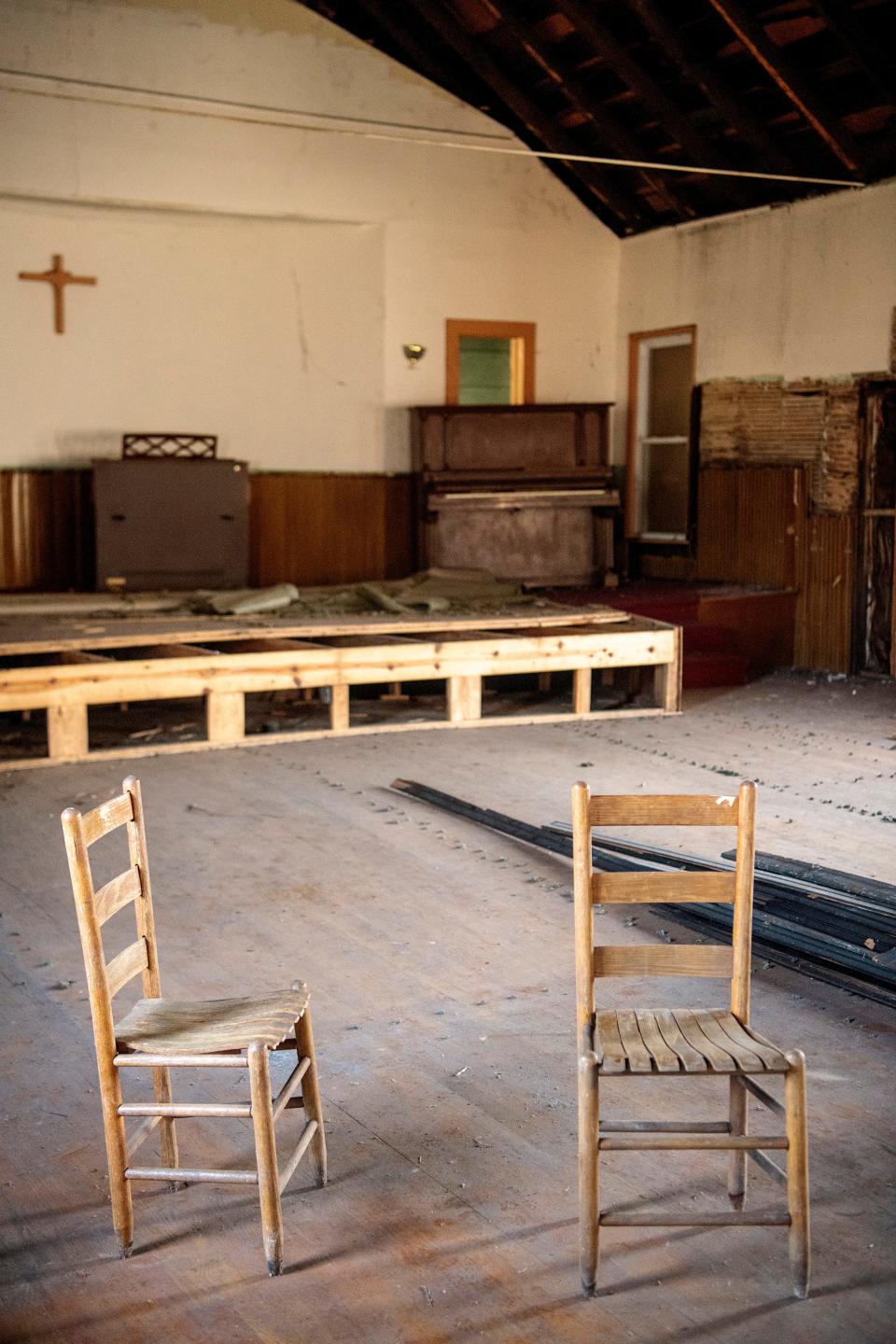
Pulley, along with the few other active members remaining, had personally paid for the electric bill and repairs for years until its official 2013 closure.
Former members of the church were not contacted when the Fire Baptized Holiness denomination decided to sell the location in 2021. Pulley hired a lawyer to dispute the sale, but notes that he feels those who made the decision must "answer to God."
"I felt the people who didn't do right; they've got to answer to God," Pulley said. "They've gotta answer. I can't judge them. I don't know why they did that and what they were gunning for, but I knew there was money involved."
Of those alive, Pulley believes he may be one of two formerly active members that didn't move on prior to the closure of the church.
Retired Rev. Jim Abbott, an East End resident since 1999 and assistant treasurer for the East End Valley Street Neighborhood Association, noted how the sale of Cappadocia and 32 Grail St. had little fanfare.
"There was never a 'For Sale' sign in front of either of those buildings or the lots in between and adjacent," Abbott told the Citizen Times. "Somebody in this development corporation just started doing some deep searches and finding out who owned them. The whole thing was done in a stealth form."
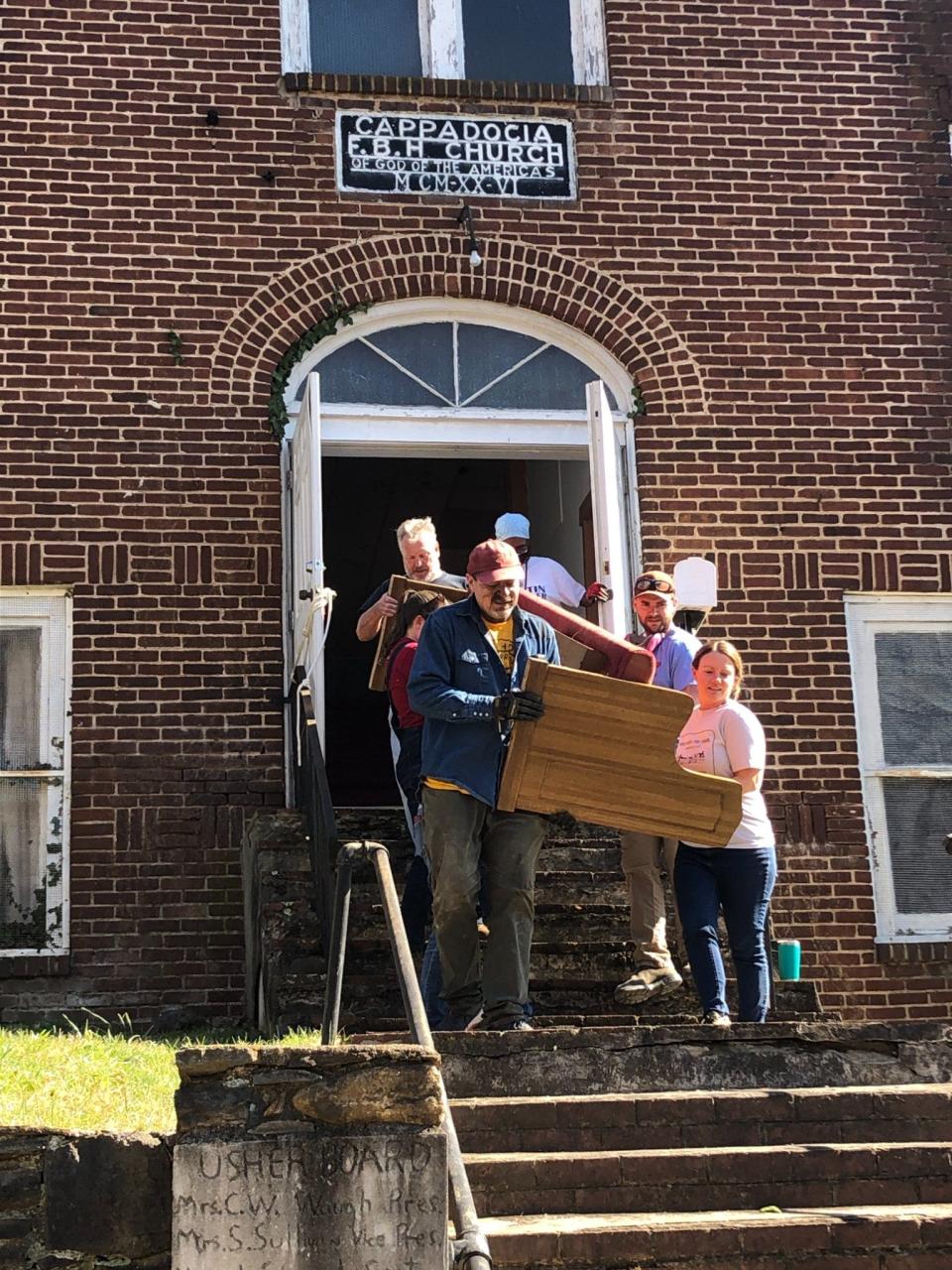
A church and home reborn?
The plan is to convert the church into three apartments and restore the Grail Street home to a better condition, where the home will remain a single-family dwelling.
"The goal is to try to make this affordable," said Amanda Moore, PSABC's director of historic preservation, as she stood in the 32 Grail St. home. "So, then it'll be nice for a family who has multiple kids who need a house that's affordable."
The decision to convert the church to housing was the result of conversation and input from the neighborhood association. Other ideas included a community center or youth education center. With Stephens-Lee Community Center right across the street, the group decided on housing, Moore said.
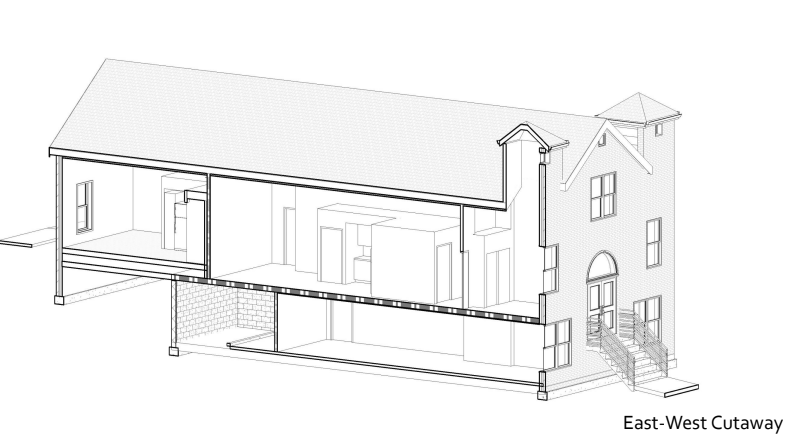
Abbott said the hope is the affordable elements "make it possible for people who belong to families who got displaced from here to come back."
"Teaming up with the Community Land Trust and getting some support from Dogwood Health foundation and other entities, it looks like we are going to be able to not only save these buildings, but to open up affordable housing," Abbott said.
Abbott said his "stereotypical view" of a preservation society was of "preserving large historic mansions." Yet, PSABC is just as focused on Black history.
"This preservation society is really interested in preserving Black history and Black neighborhoods," Abbott said. "We're just so thrilled to be working with Jessie and the preservation society to help preserve our neighborhood."
Pulley noted with the decision to convert it to housing that he's "with the neighborhood."
"If the neighborhood says it's okay, then I think it is," Pulley told the Citizen Times.
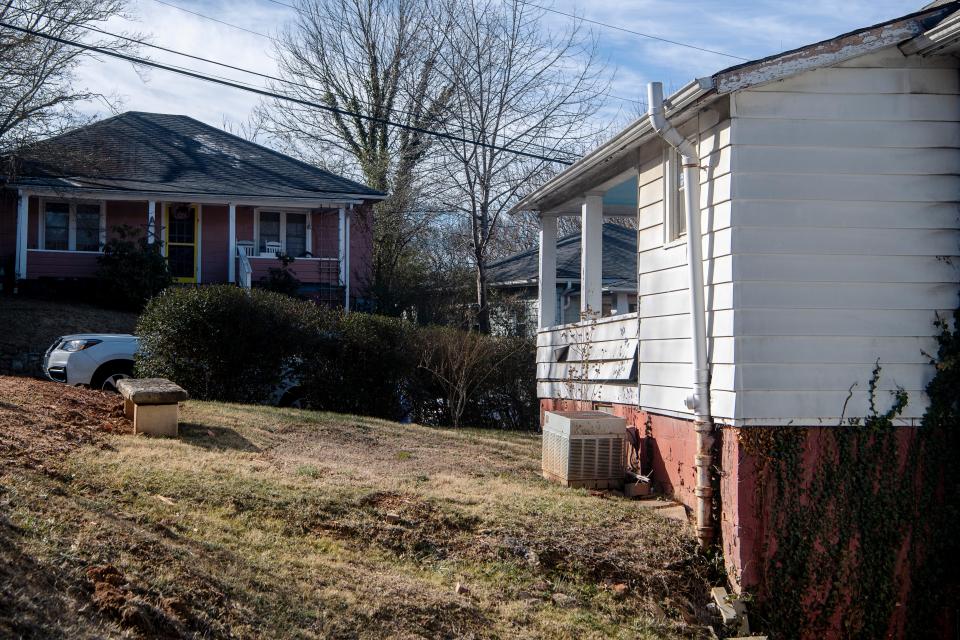
Adaptive reuse as a model
Although Cappadocia was said to be built in 1908, construction likely began in 1909, Dale Slusser, a volunteer historian and writer for PSABC's "Architectural Tidbits," told the Citizen Times.
The church was rebuilt and given its full name in 1926. The building once housed the "Fire-Baptized Holiness School," which recorded 50 students in 1928, according to Slusser's research article.
Cappadocia's degradation is noticeable after years of neglect.
The church's tall, vaulted ceilings have seen wear and tear over the years. Pulley noting that most roof repair was paid for by church members — not the denomination. Raccoons lived in the attic when the PSABC bought the building, according to Landl. A trashcan sits where the floor is too soft, and someone might be able to fall through to the basement. Both Pulley and Landl noted that Cappadocia has been broken into over the years.
The early stages of the preservation process included the removal of part of the wooden beadboard ceiling, which had never been insulated before. The ceiling "crumbled" as volunteers removed it, but old panels will be reused in further construction. However, the church pews have found a second life.
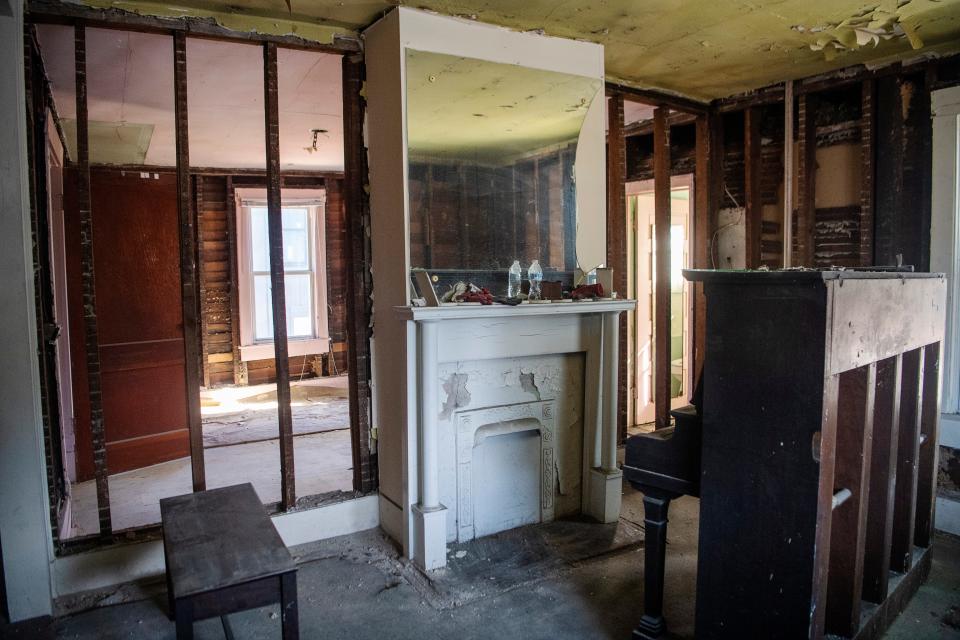
"Some folks were visiting town that attended a similar congregation in Pennsylvania and they were looking for a place to attend church while they were in town," she said. "They stopped by the church, which was of course closed, but we were there working on it and so they said: 'You know, our church needs new pews.'"
In the Grail Street home, photos from a family that used to live there were returned to relatives and a mural was uncovered, revealing an artist likely lived in the house for a time, Landl said.
The project will require a yet to be determined amount of funding, though Dogwood Health Trust awarded the preservation society with a $134,000 grant toward the project. Funding is expected to fluctuate, depending on "what surprises" might come up in the process, Landl said.
The adaptive reuse project will also have to seek a conditional zoning approval, which will require the project to pass through all of the city of Asheville's planning boards and City Council.
Landl suggests other locations, such as the former Asheville Primary School in West Asheville, could also see adaptive reuse projects for housing.
"It is crying for adaptive reuse into housing," Landl said of Asheville Primary. "The perfect location, and we talked about needing places that are walkable and on transit lines. You can't get better than Asheville Primary."
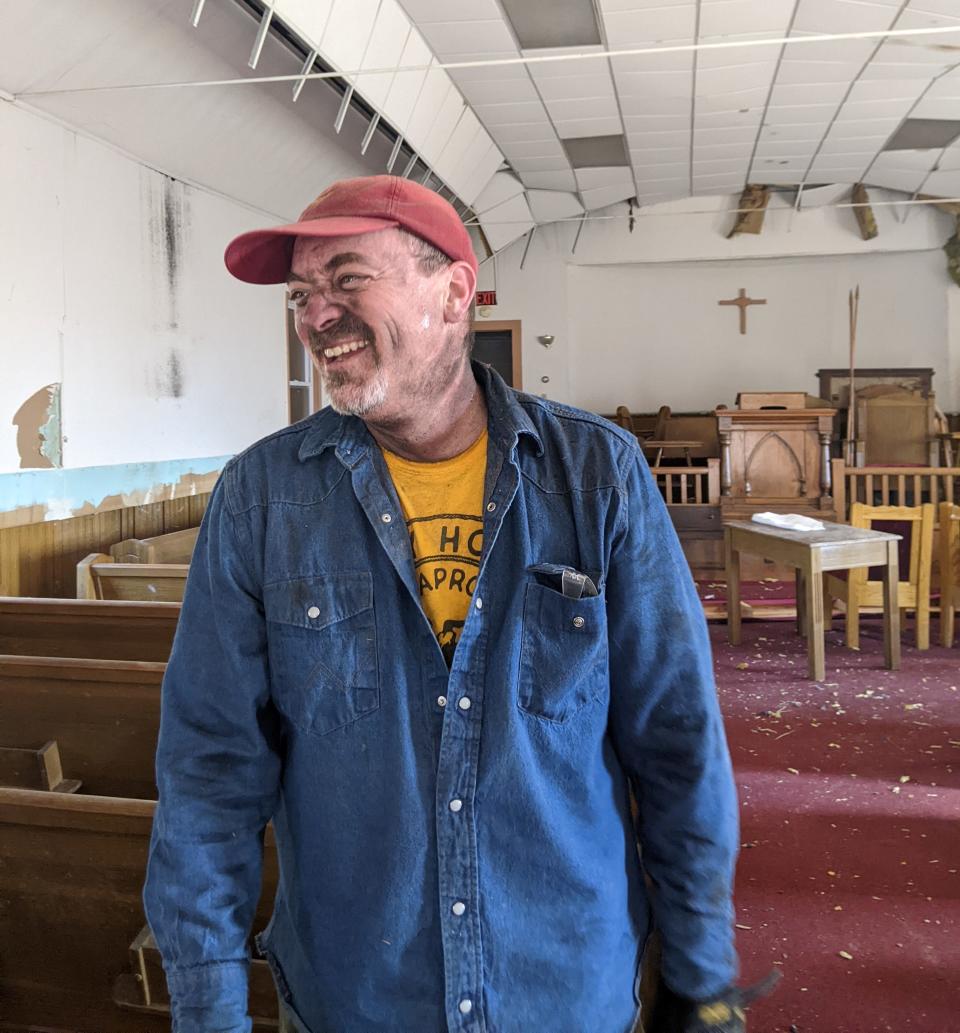
More: 'Mile-long museum': New Asheville heritage trail tells the history of Black Ashevillians
More: Asheville high-end condo owners propose hotel conversion to avoid short-term rental fines
Will Hofmann is the Growth and Development Reporter for the Asheville Citizen Times, part of the USA Today Network. Got a tip? Email him at WHofmann@citizentimes.com. Please help support this type of journalism with a subscription to the Citizen Times.
This article originally appeared on Asheville Citizen Times: Asheville 100-year-old church to become affordable housing

